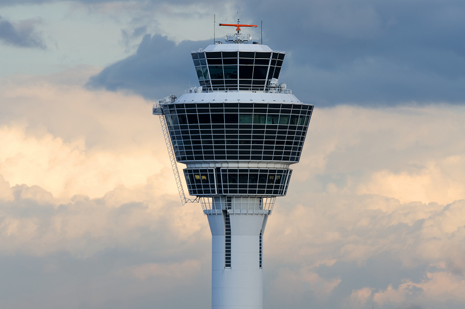
On Friday, 9 July, a group of aviation stakeholders consisting of airlines, airports and Air Navigation Service Providers (ANSPs) from four countries, signed a Memorandum of Understanding (MoU) under the acronym of EGG1 (which stands for Enabling European GBAS Growth). The objective is to push the industry and the institutions to accelerate the deployment of a Ground Based Augmentation System (GBAS), an effective air navigation technology. GBAS can play a key role in further modernizing air traffic, concretely navigation management as it stands today, and making it even more sustainable.
To know more about this important initiative, we reached out to Manfred Mohr, IATA’s Assistant Director, Single European Sky ATM Research. Manfred, a Lufthansa and Airbus veteran, is an expert in Air Traffic Management systems and drones, and passionate about materializing the vision of an even greener, safer and more efficient way of connecting the world through aviation.

Manfred Mohr, IATA Assistant Director for Single European Sky ATM Research
The European GBAS Alliance first met in May 2019 in Toulouse, France, and EGG1 is the first sub-group that emerged from this alliance. As the current navigation technology is outdated, better industry collaboration is needed to push for the deployment of new technologies that will help us improve efficiencies, as well as to fly more sustainably, in line with the objectives of the European Green Deal.
We agreed to form a forerunner group that paves the way for the deployment of the GBAS technology and built a team of interested airlines, airports and ANSPs to jointly push for the implementation. The interest grew, and our Alliance is now made up of stakeholders hailing from four countries: France, Italy, Germany, and Spain.
Our industry has made ambitious sustainability commitments, particularly in the area of the environment and CO2 emissions. As part of the European Green Deal and the ATM Master Plan, creating a sustainable air traffic management system is critical to deliver on these commitments. GBAS is a navigation technology which enables us to reduce our CO2 footprint by mitigating emissions, all the while reducing noise and providing multiple other benefits for example when landing in bad weather.
As we agreed in the first meeting back in 2019, success can only be attained if everyone is onboard. This group therefore not only committed to become early adopters but also to put pressure on all stakeholders so that a Europe-wide implementation can become reality.
We need public institutions to provide funding. In parallel, manufacturers must accelerate the development of airborne and ground equipment, whilst making it affordable. Amid a pandemic that has left airlines and airspace users short in investment capacity, it is also key the European Commission acknowledges the scarcity of funds and offers incentives that facilitate the deployment of much-needed technologies such as GBAS. The industry has already invested in this technology and to continue supporting its rollout in Europe is vital. The current technology (referred to as ‘type D’) will give us the needed experience and framework to continue its development (into what we call ‘type F’), which will make our navigation infrastructure even more robust and sustainable in the near future.
Additional information: